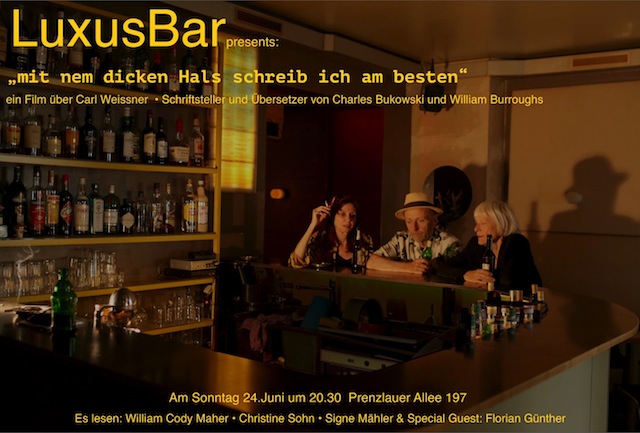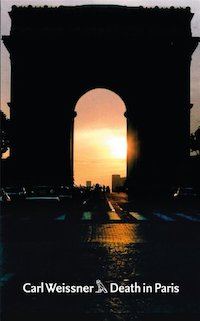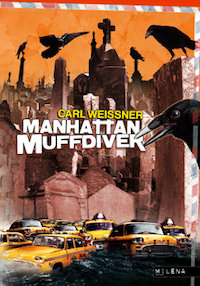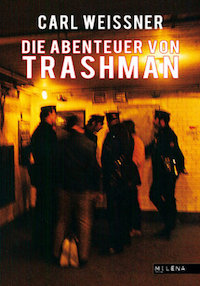Death in Paris (posted online in 2007 and published posthumously in 2012, the year he died) is the blackest. You can see why from its first paragraph: the main character — a serial killer, who happens to write books and who travels with a lifesize sex doll — wakes up at three in the morning in a dimly lit hotel room. “I should have killed myself when it still made sense,” he thinks. If you don’t find that mordantly funny — if it doesn’t make you laugh out loud — then Death in Paris may not be the book for you.
What did Carl mean by “vulgo-cynicism”? Here’s an illustration. It’s a scene from Manhattan Muffdiver, which started off as emails he sent from New York, when he was visiting me, to his friends in Heidelberg, the poet Cody Maher and the filmmaker Signe Mähler. It reads like a diary. But Carl embroidered the facts and turned them into prescient fiction. For example, I had taken him to a little café called Edgar’s Café on Manhattan’s Upper West Side. It catered to old biddies. Very haute bourgeois. But the café served great espresso in truly Italian style, which Carl relished, and it had a large painting of Edgar Allan Poe on the wall. Here’s what Carl turned that into:
I have a new hangout a street behind the Edgar Allan Poe Café. It’s called NO PORK ON MY FORK because it’s an Islamic joint. I waltz in and say: “Hey towel heads. I’m an agent provocateur with the FBI. I have an idea for you. We should blow Trump Tower to smithereens. What do you think, huh?”
The book was published in 2010, eight years before the Trump presidency. Now understand, Carl was no bleeding-heart liberal. This is how the scene continues. “You can’t be serious,” a long beard protests.
“Maybe if you’d learn to shove all that falafel into your filthy mouth instead of your ears,” I say . . . and in the next instant there is the sound of breaking glass and crashing furniture and a chorus of ‘Kill that motherfucker! Al-Hamdulillah!’”
The scene ends with the narrator saying: Always these nightmares!
Carl exploited the collage technique of “cut-ups” and “fold-ins” in all his fiction writing. All three of those end-of-life books, while not strictly cut-up texts, make use of the technique as an organizing principle — and it’s worth recalling what William Burroughs, who collaborated with Carl on various cut-up experiments, said about the technique: “When you experiment with cut-ups over a period of time you find that some of the cut and re-arranged texts seem to refer to future events.”
A last thought about Carl’s “vulgo-cynicism” — and I hope nobody takes offense at the LuxusBar, where I’m told this text will be presented as part of the celebration.
When Carl was promoting Manhattan Muffdiver, he did readings and TV interviews in Germany and Austria. But when the time came to promote Die Abenteuer von Trashman, he told me he planned to do all his readings “in Austria and Switzerland, and skip the federal republic in toto. North of the Danube,” he said, “nobody understands my type of humor — and en plus the fatherland is overrun by hacks who are fighting tooth and claw over reading venues that will seat 12. In Switzerland you get your own hash dealer. Selah.” — JH









I’m wondering what Weissner, Buk, and Burroughs thought of localities seen as places to be. They seemed a little too real to run with the herd. Burroughs a bit in NYC maybe, but then he went to Kansas. Were they not always homeless?